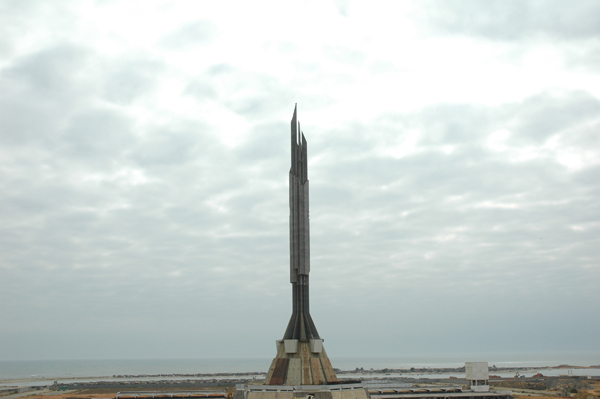Kiluanji Kia Henda
Icarus 13
Icarus 13: The First Journey to the Sun
‚Icarus 13‘ is a pioneer project in Africa that gives wings to our knowledge, creativity and imagination by making use of new technologies and the appropriate tools for building a spacecraft. The mission’s purpose is to land on the largest of all stars—the Sun. The dream once attempted by Icarus, so Greek mythology tells, will now become possible. We shall travel by night.
By the mid-twentieth century, Neil Armstrong had stepped on the Moon, (or a moon somewhere in Hollywood). Forty years later, Mars seems closer than ever and, consequently, our dreams grow wilder and more daring. The purpose now would be to apply our knowledge of astronomy and physics to improving the future of our planet. A thorough investigation of the Sun would bring us a better understanding of the inconstant pulse of human beings and the means to better protect the Earth’s ecosystem.
As a ball of fire this odyssey to the Sun has needed imagination for its fuel. Our dream is achievable as long we stay for the period in which the Sun cools down for eight hours, allowing enough time to explore its surface before dawn. In this exploration we will attempt to collect substances from the Sun’s surface so we can have a bit of the Sun on Earth.
On Earth, we invited a number of scientists on this mission to conquer space for the first time in African history. Aiming towards that achievement, a new organization—both state and privately sponsored—has been created.
This project is based in Luanda, Angola, where the foundations for ‚Icarus 13‘ were built. It is an 1,800 square meter base at the city’s seafront that employs seventy workers, artists and engineers among the most prominent. The spaceship was built with a mix of steel and a covering of diamonds, and at its heart is a system based on a catalyst called “SnowBall,” which transforms heat into cold in unmeasured speed. The spaceship is powered by solar energy, which gives ‚Icarus 13‘ total autonomy in orbit.
The flight crew is composed of two astronauts and two beautiful air stewards who were trained—one year before the launch—in the desert of Namibe, where a base for spaceship crew is located. They have been exposed to high temperatures inside a machine called “Sahara,” developed especially for this project in order to equip the human being with a high tolerance for extreme temperatures. A special suit was also developed based on the same SnowBall technology. It is called the “CoolSuit” and it is equipped with tanks filled with Budweiser that allow them to support the heat of the odyssey.
The experimental launch of ‚Icarus 13‘ happened after two years of hard work and deep investigation. The launch occurred at 6:00 pm on May 25, 2006. It was a moment of great tension, but every problem was sorted out and we finally had Icarus flying towards the Sun. The spaceship reached the Sun after fifteen days of traveling the 149.5 million kilometer distance, with the crew onshore working for fourteen hours a day towards a dream that was closer than ever. At 10:00 pm the spaceship landed on the photo-sphere of the Sun. The investigation of the Sun’s surface took five hours, and particles from the photosphere were collected for observation in our laboratory. According to the astronauts’ description, the Sun has the most beautiful night.
This first mission accomplished, we plan to launch the first solar tourist flight within five years; duly equipped with ultraviolet sun block and sunglasses that are dark enough. The profit from the first solar tourist journey will support the continuation of our scientific investigation into discovering more about the Sun and his effects on the Planet Earth. To be continued…



